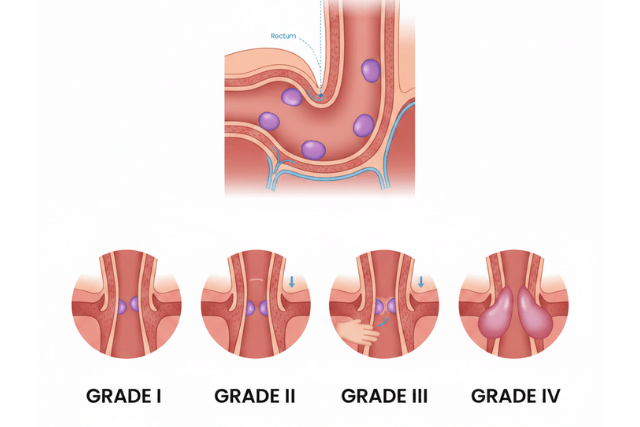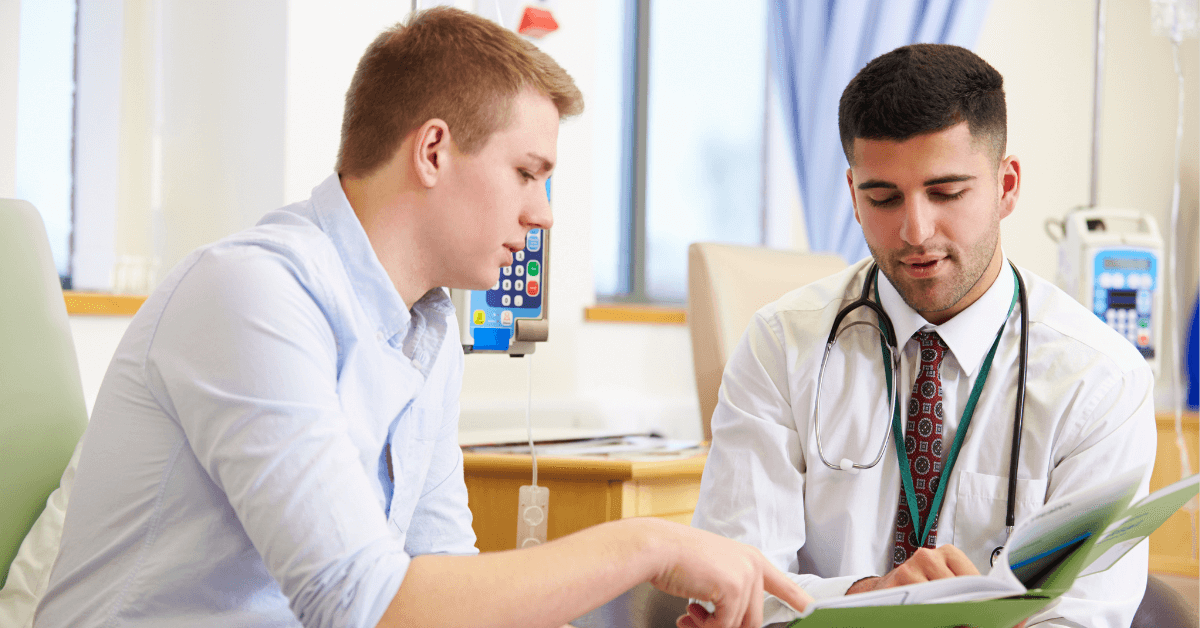Seeing blood or pus after using the bathroom can be concerning, but it’s not always an indication of something serious. Many people experience this, yet understanding the cause is crucial to addressing the issue effectively. From conditions like hemorrhoids and anal fissures to more severe health problems, a variety of factors can lead to blood or pus in the stool. This blog will break down the possible causes and offer helpful tips on how to deal with this uncomfortable situation.
Why is There Blood or Pus After I Go to the Bathroom?
There are various reasons you might notice blood or pus after using the bathroom, and it’s important to understand these underlying causes. While some conditions are minor and easily treatable, others require medical intervention. By knowing what might be causing this symptom, you can take the right steps to manage it.
Common Causes of Blood or Pus After Using the Bathroom
Let’s dive into the most common reasons blood or pus might appear after using the bathroom. Each of these conditions can be caused by different factors, and understanding their symptoms and causes is the first step toward resolving the issue.
1. Hemorrhoids: The Leading Cause of Blood After Bathroom Use
One of the most frequent causes of blood after bathroom use is hemorrhoids. Hemorrhoids are swollen blood vessels in the anal or rectal area that can become inflamed and cause bleeding. They often develop as a result of excessive straining during bowel movements, prolonged sitting, or chronic constipation.
How Do Hemorrhoids Cause Blood?
When you have hemorrhoids, the swollen veins can rupture during bowel movements, causing bright red blood to appear on the toilet paper or in the toilet bowl. External hemorrhoids tend to cause more noticeable bleeding, but internal hemorrhoids can also bleed, especially if they protrude out of the anus.
In some cases, hemorrhoids can cause discomfort, itching, and pain, making it more challenging to go to the bathroom without irritation. The treatment for hemorrhoids often involves lifestyle changes, such as increasing fiber intake, using topical ointments, and sitting in warm baths known as sitz baths.
2. Anal Fissures: A Painful Condition That Can Cause Blood
Another common cause of blood after bathroom use is anal fissures. These small tears in the skin around the anus can occur when passing large or hard stools. When the skin tears, it can lead to significant discomfort and bleeding.
How Do Anal Fissures Cause Blood?
- Anal fissures typically cause sharp, stabbing pain during or after bowel movements.
- Bright red blood may appear on the toilet paper or stool. This bleeding is usually due to the tear in the skin.
- The bleeding tends to be small, but the pain can be severe, especially with larger bowel movements.
The treatment for anal fissures includes dietary changes, such as consuming more fiber, drinking plenty of water, and using topical creams or ointments to reduce inflammation and soothe the area. In some cases, prescription medications or Botox injections may be used for more persistent fissures.
3. Anal Fistulas: When Pus and Blood Appear Together
An anal fistula is another potential cause of both pus and blood after using the bathroom. This condition occurs when an infection in the anal glands creates an abnormal tunnel that connects the anus to the skin surrounding it. An anal fistula often results from an anal abscess, which is an infection that forms a pocket of pus near the anus.
What Causes an Anal Fistula?
- Anal fistulas form when an anal abscess does not heal properly and creates a passageway.
- The pus or blood may drain out of the fistula, causing discomfort, swelling, and even an unpleasant odor.
Treatment for an anal fistula typically requires surgery. The procedure may involve draining the abscess or closing the fistula. Newer techniques like Fistula-tract Laser Closure (FiLaC®) offer a minimally invasive option for closing the fistula with minimal discomfort and faster recovery time.
4. Proctitis: Inflammation of the Rectum
Proctitis is the inflammation of the rectum, and it can cause both pus and blood after using the bathroom. This can result from infections, inflammatory bowel disease (IBD), or radiation therapy.
What Causes Proctitis?
- Infections: Certain bacterial infections, sexually transmitted diseases (STDs), or viral infections can lead to rectal inflammation and cause pus or blood.
- Inflammatory Bowel Disease (IBD): Conditions like Crohn’s disease and ulcerative colitis are linked to chronic inflammation in the digestive tract, including the rectum. This can result in bleeding and pus in the stool.
Treatment for proctitis depends on its underlying cause. Antibiotics may be prescribed for infections, while corticosteroids or other medications may be needed to control inflammation associated with IBD.
5. Colon Polyps or Cancer: A Serious but Less Common Cause
While less common, colon polyps and colon cancer can also cause blood after a bathroom visit. Polyps are growths in the colon that may bleed, and some can develop into cancer over time. If the bleeding is significant, or if the blood appears darker, it could indicate a more serious condition, like colon cancer.
Colon Cancer and Blood in Stool
- Colon cancer can cause dark, tarry stools due to bleeding from the upper part of the colon.
- Bright red blood may also appear if the tumor is closer to the rectum.
It’s crucial to see a doctor if you experience unexplained bleeding, especially if it’s accompanied by other symptoms like weight loss, fatigue, or changes in bowel habits. Colon cancer is often treatable if caught early.
6. Gastrointestinal Bleeding: An Internal Issue
Gastrointestinal bleeding is another possible cause of blood after bathroom use. Bleeding can originate in the stomach, small intestine, or colon, and it may lead to black, tarry stools (melena) or bright red blood in the stool. Conditions like gastritis, ulcers, and diverticulosis can cause gastrointestinal bleeding.
How Does GI Bleeding Cause Blood?
- Upper GI bleeding typically causes dark, tarry stools, while lower GI bleeding may result in bright red blood in the stool.
- If you experience symptoms like abdominal pain, nausea, or vomiting along with bleeding, seek medical attention immediately.
Treatment depends on the underlying condition. It may involve medication, endoscopy, or surgery, depending on the severity of the bleeding.
When Should You Be Concerned About Blood or Pus After Bathroom Visits?
While some causes of blood or pus after bathroom visits are harmless and treatable, there are situations where you should seek medical attention. If you notice any of the following, it’s important to consult a doctor:
- Persistent or worsening symptoms: If bleeding or pus persists, or if the condition worsens over time, a doctor’s visit is essential.
- Severe pain: Intense pain, particularly during or after bowel movements, can indicate a more serious condition.
- Unexplained weight loss or fatigue: These symptoms, combined with bleeding, could suggest conditions like cancer or an inflammatory bowel disease.
- Changes in stool color or consistency: Black, tarry stools or pus-filled stool should always be checked by a healthcare professional.
What Can You Do to Manage Blood or Pus After Using the Bathroom?
If you notice blood or pus after using the bathroom, there are steps you can take to manage the symptoms and improve your condition. The first step is to determine the cause, and here are a few tips that can help in the meantime:
- Increase Fiber Intake: A diet high in fiber helps keep stools soft, reducing the strain on the rectum and minimizing the risk of hemorrhoids and fissures.
- Stay Hydrated: Drinking plenty of water softens stool, making bowel movements easier and less likely to cause irritation.
- Practice Good Hygiene: Gently clean the anal area with warm water after bowel movements. Avoid using harsh soaps or wipes that may irritate the skin.
- Use Sitz Baths: Sitz baths are a simple way to soothe the anal area and provide relief from pain, itching, and swelling caused by hemorrhoids or fissures.
- Seek Medical Attention: If symptoms persist, or if you’re unsure about the cause, see a doctor for diagnosis and treatment.
Conclusion
In conclusion, blood or pus after using the bathroom can result from a variety of conditions, ranging from hemorrhoids and anal fissures to more serious concerns like colon cancer or gastrointestinal bleeding. While some causes are manageable with lifestyle changes and at-home treatments, others may require medical intervention. If you’re experiencing persistent or severe symptoms, it’s important to consult a healthcare professional for proper diagnosis and treatment. Understanding why there is blood or pus after bathroom visits helps you take appropriate action and maintain good health.



